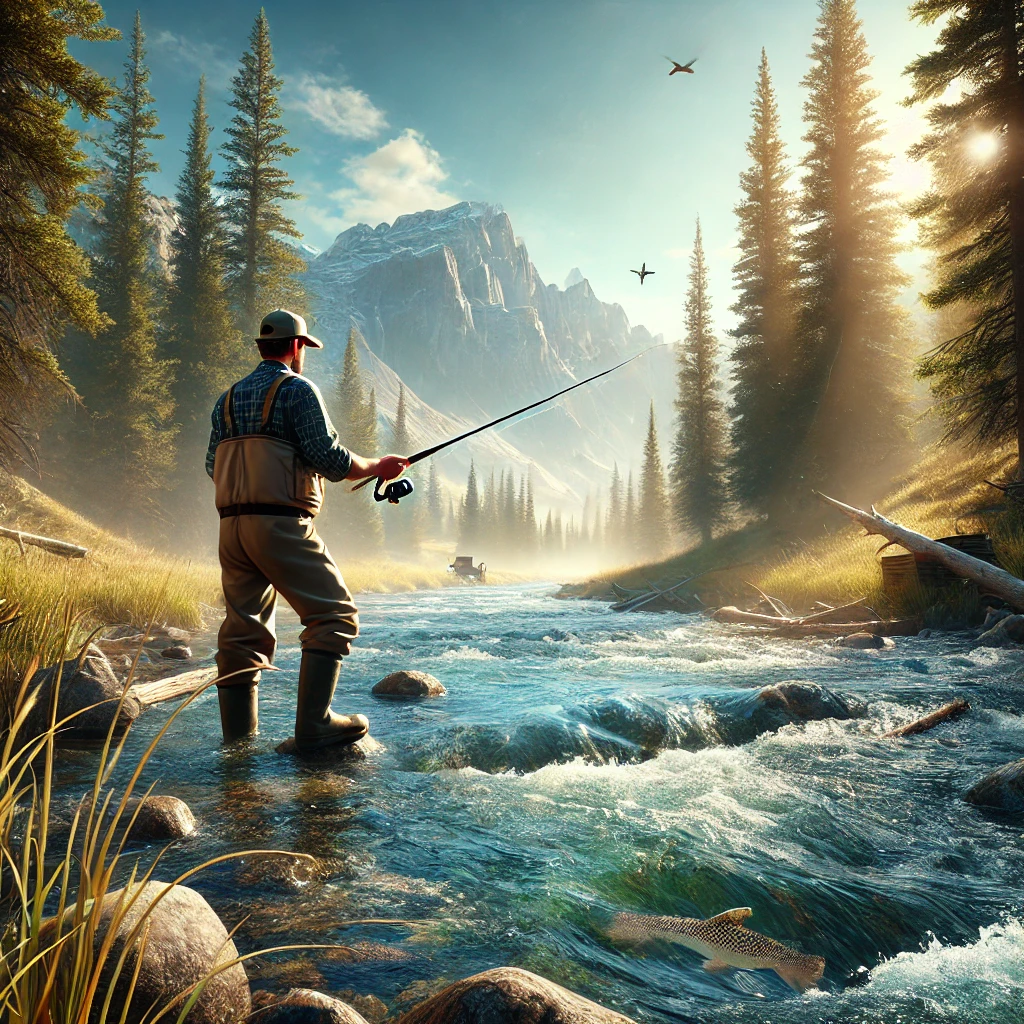A Beginner’s Guide to Pursuing the Elusive Trout

Fishing for trout is more than just a pastime it’s an art. The thrill of casting into a pristine river, the anticipation of a strike, and the sheer satisfaction of landing one of the most sought-after freshwater fish make it an unforgettable experience.
Trout are cunning, selective, and at times downright frustrating, which is exactly why so many anglers become obsessed with them. If you’re just starting out, you might wonder: Where do I find trout? What bait should I use? How do I increase my chances of catching one?
In this beginner’s guide, we’ll cover everything you need to know to start your trout fishing journey. From understanding their behavior to selecting the right gear and perfecting your techniques, you’ll soon be on your way to landing your first trout.
1. Understanding Trout: Species and Behavior
Types of Trout
- Rainbow Trout: Recognizable by their pink stripe, these are commonly stocked and relatively easier to catch.
- Brown Trout: More elusive and wary of anglers, brown trout are known for their aggressive strikes.
- Brook Trout: Found in cold, clear streams, these fish are often smaller but incredibly beautiful.
- Cutthroat Trout: Native to the western U.S., cutthroats thrive in mountain streams and lakes.
Trout Habits and Habitat
Trout prefer cold, oxygen-rich water and are often found in:
- Rivers and streams: They like hiding behind rocks, in deep pools, and near undercut banks.
- Lakes and reservoirs: Look for them in cooler, deeper water during summer and near the surface in spring and fall.
🐟 Pro Tip: If you can spot insects on the water, match your bait to what the trout are naturally feeding on!
2. Essential Gear for Trout Fishing
Fishing Rod and Reel
- Spinning Rod (Ultra-light to Medium-light): Perfect for beginners, allowing easy casting with lures and bait.
- Fly Rod (4-6 weight): Used for fly fishing, which mimics the trout’s natural prey.
Fishing Line
- 2-6 lb monofilament or fluorocarbon for spinning setups.
- Floating fly line for fly fishing.
Tackle and Bait
- Artificial Lures: Spinners, spoons, and small crankbaits mimic baitfish.
- Live Bait: Worms, minnows, and crickets are great for natural presentation.
- Flies (for Fly Fishing): Dry flies, nymphs, and streamers match natural insects.
🎣 Bonus Tip: Trout have excellent eyesight. Use light line and small hooks to avoid spooking them!
3. Finding the Best Spots to Fish for Trout
In Rivers and Streams
- Behind Rocks and Logs: Trout use these as cover from predators.
- Deep Pools: Slow-moving water is a prime resting spot.
- Eddies and Current Seams: Areas where fast and slow water meet are excellent feeding zones.
In Lakes and Reservoirs
- Near Drop-offs: Trout stay near deeper water but move shallower to feed.
- Around Weed Beds: Small insects and baitfish make these areas ideal.
- Near Inlets and Outlets: Fresh, oxygenated water attracts feeding trout.
🌊 Pro Tip: Trout are less active in warm water focus on shady spots or deeper areas when the temperature rises!
4. Mastering Trout Fishing Techniques
Spin Fishing (Best for Beginners)
- Inline Spinners (like Panther Martins) for rivers.
- Small Spoons (like Kastmasters) for lakes.
- Soft Plastics (like trout worms) for finesse presentations.
Fly Fishing (For a More Challenging Approach)
- Dry Flies (for surface-feeding trout).
- Nymphs (for trout feeding below the surface).
- Streamers (for larger, aggressive trout).
🎯 Pro Tip: Cast upstream in rivers and let your lure drift naturally to mimic real food!
5. Start Your Trout Fishing Adventure!
Fishing for trout is both challenging and rewarding, making it one of the most exciting outdoor pursuits. With the right knowledge, gear, and techniques, you’ll be well on your way to landing your first trout.
Remember, every fishing trip is an opportunity to learn and improve. Stay patient, enjoy the beauty of nature, and savor the moment because chasing trout isn’t just about the catch, but the adventure itself.
🎣 Tight lines, and happy fishing! 🎣
Please Share this Article with your Friends or Colleagues.
From the Author: Earnest Sherrill
If there's one message I hope to leave with my readers, it's this: Don't wait. Get outside, explore, and create your own memories in the wild while you still can. Whether it's a weekend camping trip, a day hike, or even just sitting quietly in a park, the outdoors offers something for everyone.For those who share my passion or simply want to support a voice dedicated to celebrating the wild, consider helping sustain this work. Your support allows me to continue writing, reflecting, and sharing the wonders of the natural world.
Together, we can keep the spirit of the outdoors alive, one story, one adventure, and one "coffee" at a time.
Recent Posts
Submit your Site


